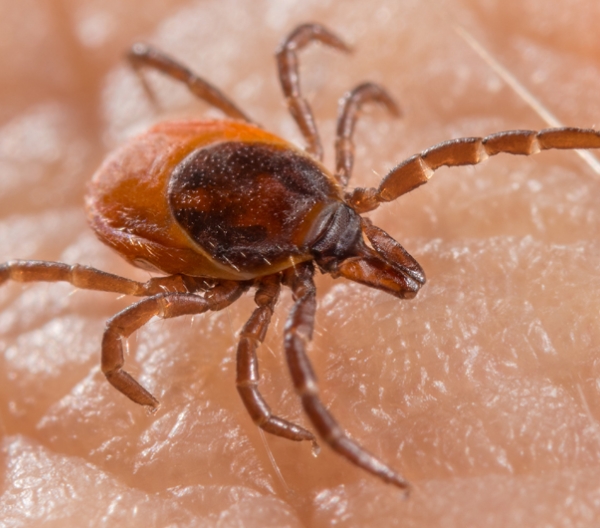A snapshot of the latest research on diet, exercise, and more
The latest studies on microplastics, Parkinson's, memory, strength and more.
Microplastics linked to heart attacks, strokes

Microplastics and (even tinier) nanoplastics (MNPs) enter your body through your skin, your food, and the air you breathe. And what ends up in your arteries may raise your risk of a heart attack or stroke.
Researchers examined the plaque they removed from 257 patients who needed surgery to open their narrowed carotid (neck) arteries. Analyses detected polyethylene in 58 percent—and polyvinyl chloride (PVC) in 12 percent—of the patients. (What’s more, in the 10 plaques examined with electron microscopes, the scientists saw “jagged-edged foreign particles.”)
And after roughly three years, the risk of a heart attack, stroke, or death was 4½ times higher in people with MNPs (polyethylene or PVC) than in those without. People with more MNPs also had higher levels of inflammatory markers.
What to do
Minimize your use of plastic, starting with bottled water, the biggest source. This study can’t prove that MNPs cause cardiovascular disease, even though the researchers accounted for factors—like high blood pressure and LDL cholesterol—that raise the risk of a heart attack or stroke. Still, it’s worth limiting your exposure to plastic to play it safe.
When it comes to portions, size matters

When people were offered bottomless plates of large, medium, or small pretzels, they ate more of the large pretzels (68 calories’ worth) than the medium (51 calories) or small (47 calories). The participants also ate the large pretzels more quickly and with bigger bites than they ate the medium or small pretzels.
What to do
Keep in mind that larger “unit” foods (like cookies, crackers, chocolates, etc.) may lead you to eat more...and more quickly.
Do D-mannose supplements help prevent UTIs?

“Urinary tract health,” say labels for AZO’s D-Mannose, a sugar found in some fruits and vegetables. “Helps cleanse, flush & protect the urinary tract.”
Do D-mannose supplements help prevent urinary tract infections?
Scientists randomly assigned roughly 600 women with recurrent UTIs to take either a daily placebo or D-mannose supplement (not AZO). After 6 months, D-mannose takers were no less likely than placebo takers to have the symptoms that caused them to seek care.
What to do
Though this study didn’t require a lab test to confirm a UTI—many doctors don’t—it “provides compelling evidence to contest the use of D-mannose as a prevention strategy for recurrent UTIs,” said an editorial accompanying the study.
Beef vs. other proteins put to the test for muscle-building

Can beef boost muscle or tendon strength when you do strength training?
Researchers (partly funded by the beef industry) randomly assigned 49 older women to eat a normal-protein diet (0.36 grams of protein per pound of body weight), a higher-protein diet (0.64 grams per pound of weight), or a higher-protein diet with 3 oz. of lean beef per day. The first two groups ate 3 oz. of lean beef per week. All 3 groups also got protein from chicken, eggs, dairy foods, beans, grains, and nuts and did supervised strength training 3 times a week.
After 12 weeks, all 3 groups had stronger thigh muscles, but muscle and tendon strength didn’t differ among groups.
What to do
Rely on strength training—not extra protein—to keep your muscles and tendons strong.
How tackling your risk factors can keep your brain sharp

A multi-pronged intervention may protect cognition in people at risk for dementia.
Researchers enrolled 172 people aged 70 to 89 who had at least two of eight risk factors: uncontrolled hypertension or diabetes, smoking, physical inactivity, social isolation, depressive symptoms, poor sleep, or taking medications that affect cognition.
Participants were randomly assigned to get either personalized coaching to improve their risk factors or mailed advice to prevent dementia (the control group). After two years, people in the coached group had a modest but statistically significant improvement on cognitive tests compared to the control group.
What to do
More trials are underway. In the meantime, protect your memory by tackling risk factors that threaten your body and brain.
An Ozempic-like drug for early Parkinson’s?

Lixisenatide, an Ozempic-like drug, might help people with early Parkinson’s disease.
Scientists randomly assigned 156 people aged 40 to 75 who had been diagnosed with Parkinson’s within the past 3 years to take either lixisenatide or placebo injections along with their other Parkinson’s medications.
After 1 year, scores on a scale measuring motor disability barely budged for the lixisenatide takers (0.04 points better), while the placebo takers’ scores got 3.04 points worse (on a scale of 0 to 132).
On the downside, nausea occurred in 46 percent of people who got lixisenatide but only 12 percent of placebo takers. And 13 percent of lixisenatide takers, but only 3 percent of placebo takers, reported vomiting.
What to do
Stay tuned. The FDA has yet to approve lixisenatide for Parkinson’s. A key question: Can it keep Parkinson’s from slowing by 3 points in total...or 3 points per year? The results need confirmation in future trials.
Do people eat less from smaller dishes?

People ate less from smaller dishes in some earlier studies, but much of that research has since been retracted.
In a new study, researchers offered 50 women an unlimited self-serve breakfast buffet on smaller or larger plates and bowls (on separate days). The women ate no fewer calories at breakfast on days they used the smaller rather than the larger dishes. Nor did dish size alter how many calories they ate the rest of the day.
What to do
Don’t expect dish size to influence how much food you eat. In contrast, larger servings of food do lead people to eat more.
Do dairy foods lower the risk of frailty in older people?

Researchers tracked 85,280 women aged 60 or older for up to 26 years. Frailty was defined as having at least 3 of 5 criteria: fatigue, low strength, reduced aerobic capacity, unintentional weight loss, or five or more chronic illnesses (like arthritis, depression, heart disease, hypertension, and type 2 diabetes).
The results: Each daily serving of cheese was linked to a 10 percent higher risk of frailty. Neither milk nor yogurt was linked to frailty, but replacing one daily serving of milk, yogurt, or cheese with a serving of beans, nuts, or whole grains was linked to about a 10 percent lower risk of frailty.
In contrast, replacing a daily serving of milk, yogurt, or cheese with a serving of red meat or eggs was linked to a 15 to 20 percent higher risk of frailty.
What to do
This type of study can’t prove that any food causes or prevents frailty because something else about people who eat the food may explain their risk. Still, it’s worth eating beans, nuts, and whole grains to lower your risk of heart disease and stroke.
Continue reading this article with a NutritionAction subscription
Already a subscriber? Log in
The latest on preventing disease
What to know about diseases from ticks and mosquitoes
Preventing Disease

A snapshot of the latest research on diet, exercise, and more
Fact vs. Fiction

How to prevent bites from ticks and mosquitoes
Preventing Disease

Take our quiz to help you stay healthy
Preventing Disease

Colorectal cancer: 5 ways to cut your risk
Preventing Disease


